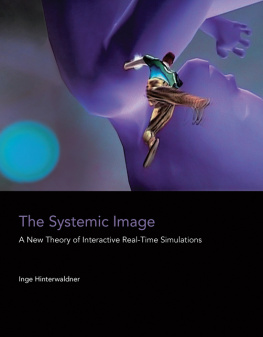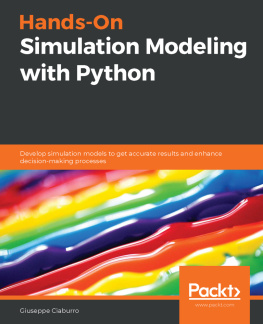Simulating War
Studying Conflict through Simulation Games
Philip Sabin
Continuum International Publishing Group
The Tower Building 11 York Road London SE1 7NX | 80 Maiden Lane Suite 704 New York, NY 10038 |
www.continuumbooks.com
Philip Sabin 2012
All rights reserved. No part of this publication may be reproduced or transmitted in any form or by any means, electronic or mechanical, including photocopying, recording or any information storage or retrieval system, without prior permission from the publishers.
First published 2012
British Library Cataloguing-in-Publication Data
A catalogue record for this book is available from the British Library.
ISBN 978-1-4411-1492-1
Typeset by Fakenham Prepress Solutions, Fakenham, Norfolk NR21 8NN
Contents
[All artwork was created by the author.]
[All artwork was created by the author.]
As with my previous book, Lost Battles, this work has taken so long to complete that I must again thank two successive editors at Continuum. Ben Hayes got my proposal accepted despite the unusual topic, and was just as helpful in shepherding this new project as he was with Lost Battles. His successor Claire Lipscomb has managed the later stages of the endeavour with equal aplomb, dealing uncomplainingly with my usual overoptimistic delivery promises. I am also very grateful to the other staff at Continuum, especially Liz White and Nicola Rusk who have been so helpful for such a long while.
I could never have made such extensive and wide-ranging progress with conflict simulation techniques were it not for the ideas and inspiration provided by the work of hundreds of talented enthusiasts over the past five decades. The bibliography gives a sense of many of the people involved, but I would especially highlight James Dunnigan, Phil Barker, Richard Berg, Charles Vasey and Paul Rohrbaugh for their general contribution and their assistance to me personally. Paddy Griffiths prolific simulation designs and insightful scholarly studies of conflict dynamics have been a particular inspiration, and his death last year was a very sad loss. Peter Perla, Howard Body, Tom Mouat, Andrew Sharpe and John Curry have all helped me to develop my simulation activities, and have played significant roles in building synergies between professional and recreational wargaming. My own MA students have also taught me a lot as we have worked together on their simulation projects over the past several years, and here two names deserve special mention Garrett Mills, whose project forms the basis of the jointly designed game Roma Invicta? in , and Arrigo Velicogna, who has given invaluable help to later cohorts of MA students and has been my main teaching assistant in undergraduate simulation classes.
I am grateful to several organisations for helping to make the book possible. The first is obviously the Department of War Studies at Kings College London, where I have been based throughout the 25 years it has taken me to research and to develop my ideas on this unusual topic. The Society of Ancients and the Wargame Developments organisation have also provided longstanding inspiration, and it is well worth perusing their websites (.
Finally, I could never have completed this drawn out and time-consuming project without the love and support of my entire family, for which the books dedication is but scant recompense.
To my Family
In the whole range of human activities, war most closely resembles a game of cards.
As Clausewitzs remark suggests, less energetic and more cerebral kinds of game were also linked from the earliest times to the institution of war. Board games such as Wei Hai and Chaturanga are known to have been played in China and India well over two millennia ago, and Chaturanga in particular had a clearly military focus, with pieces depicting the four main arms of Indian warfare (infantry, cavalry, chariots and elephants), and with play governed by fixed rules and the roll of dice. Wei Hai and Chaturanga seem to have been the ancestors of games that remain pervasive to this day Go and chess respectively. The relationship of these games to real warfare became increasingly stylised as military methods changed, but there were periodic attempts throughout the early modern era to devise more detailed and realistic miniature representations of combat, until Clausewitzs own day, when another Prussian, von Reisswitz, began the modern age of military gaming with the development of Kriegsspiel.
What is it about war and games that has bound them together for millennia, despite the apparently stark contrast between the gravity of fights for survival and the frivolity of play? One need only watch play fights between young mammals such as cats to see that the contrast is in fact anything but stark. In his classic study
The key characteristic uniting war and games, and which sets them apart from most other human activities, is their competitive and agonistic nature. In games, this competition is mainly artificial, while in war it is mainly situational, but the effect is the same. Both war and games pit humans against one another in a dynamic interactive contest of wits and resources, as the opposing sides struggle to prevail. As Clausewitz succinctly put it: War is nothing but a duel on a larger scale. The centrality of this agonistic struggle gives war and games some key common features that distinguish both of them from other human endeavours, in which people are generally working more independently or cooperatively. US military theorist Edward Luttwak wrote that:
[T]he entire realm of strategy is pervaded by a paradoxical logic of its own, standing against the ordinary linear logic by which we live in all other spheres of life (except for warlike games, of course). In settings where conflict is merely incidental to purposes of production and consumption, of commerce and culture, of social relations and consensual governance, with strife and competition more or less bound by law and custom, a noncontradictory linear logic applies, whose essence is captured by what we think of as commonsense.
Luttwak cites numerous instances of the paradoxical logic of strategy, ranging from the Roman writer Vegetiuss advice that, If you want peace, prepare for war to the way in which military forces often deliberately choose difficult or circuitous routes to an objective. In Luttwaks words, Only in the conflictual realm of strategy would the choice arise at all, for it is only if combat is possible that a bad road can be good precisely because it is bad and may therefore be less strongly held or even left unguarded by the enemy.
Sun Tzu, whose precepts on war still command enormous respect after over two millennia, sets out similar paradoxical principles, such as that: Invincibility lies in the defence; the possibility of victory in the attack. He advises that: All warfare is based on deception. Therefore, when capable, feign incapacity; when active, inactivity Offer the enemy a bait to lure him; feign disorder and strike him When he concentrates, prepare against him; where he is strong, avoid him Attack where he is unprepared; sally out when he does not expect you These are the strategists keys to victory.
Since games are one of the very few activities in which these distinctive characteristics of warfare may be mirrored, it is hardly surprising that there have been growing efforts to use games as a means of simulating in a safe and controlled environment some of the dynamics of armed conflict. As already mentioned, Baron von Reisswitz, a civilian adviser to the Prussian court at Breslau, managed in 1811 to obtain royal patronage for his
Next page








